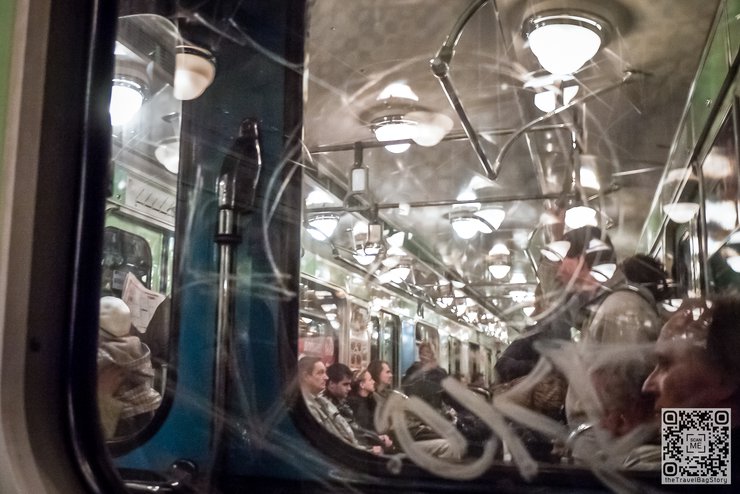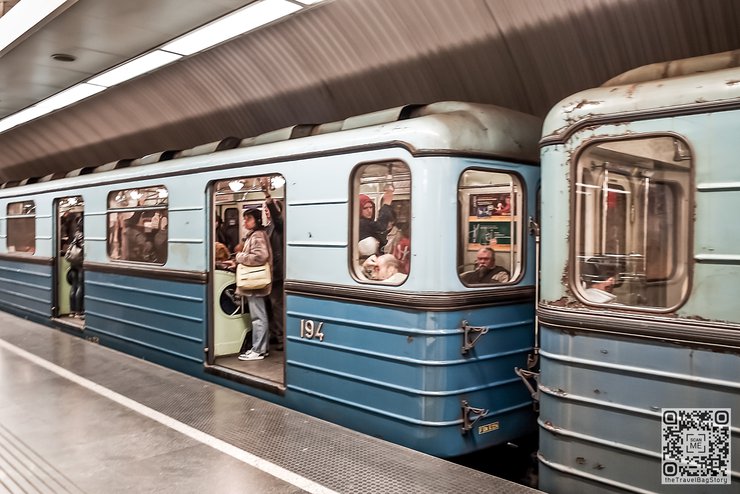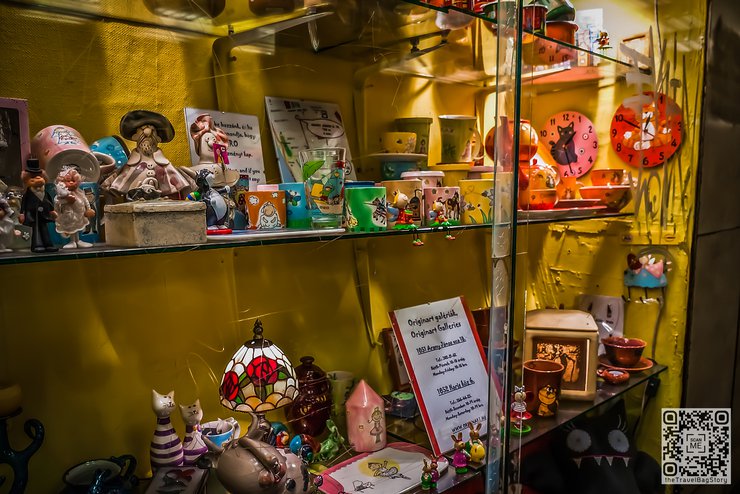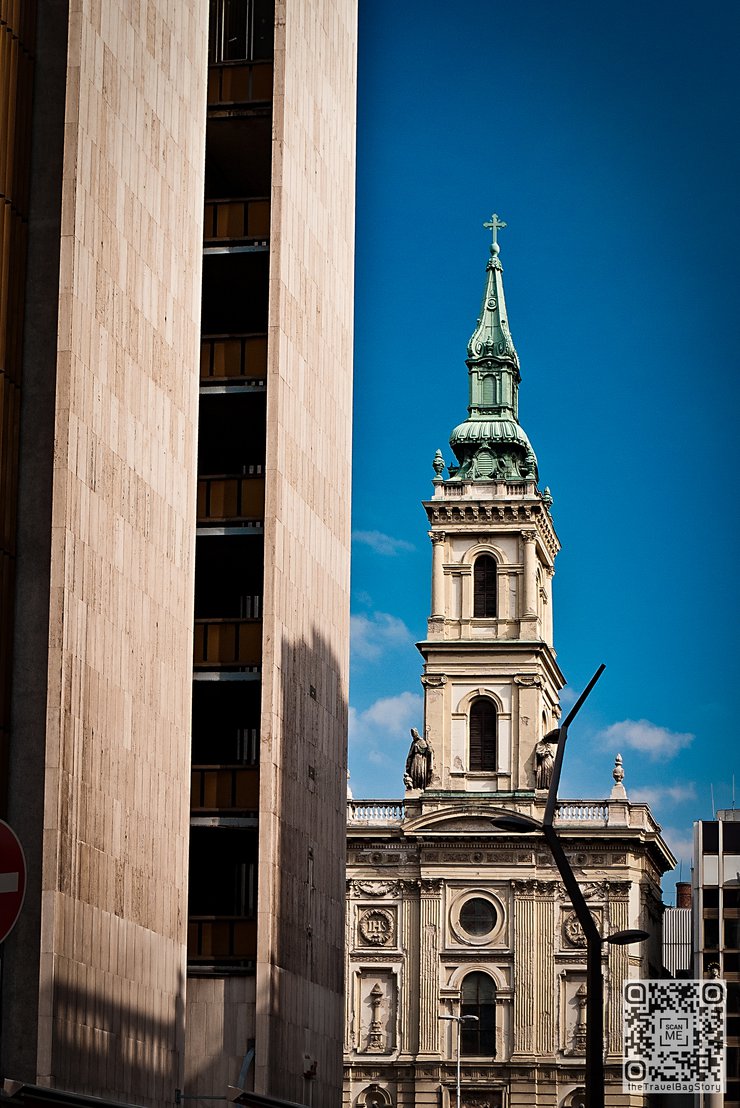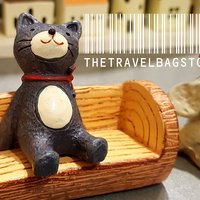There are a lot of good stories and memories in Budapest that I have experienced since I have visited till I left and insensibly I feel somehow bind with it, especially the first spectacular view of the city by the Danube river that I have seen, it completely brings down the ranking of the view at Vienna and Prague in my mind, even though I feel that these three cities are exceptionally beautiful, not less than each others.

Budapest probably is the plain city in many peoples' view. Nonetheless, in my opinion, when the trip is ended, I unexpectedly found that Budapest becomes No.1 among the cities that I impress, even though I much more prefer nature traveling as everyone might have known. Although the beauty of this city is as nice as Prague, Vienna, Innsbruck and Salzburg, but Budapest edges out those cities in the aspect of its tranquillity, not bustle; especially it is surprisingly beyond my expectation as at first I set it as the bypass for quickly applying the visa, but it happens to become the city that I would like to pause the time and stay there. All in all, I would like to use this review to transmit my feelings toward this city through the pictures from my camera.

Budapest, Hungary in the past is completely a socialism country like Russia, unlike Czech that still has much more vibe of European style. It is the city that lies along the Schengen boundary that I have noted that it would be a city in Middle European countries that I will definitely visit since I studied International Politics class, but I still don't pay much attention on it.
In this trip the main destinations would be Austria and Czech and as the flight has to transit at Amsterdam, thus I will stop over and travel in Netherlands for a bit.
Now, it comes to the visa matter, I manage to apply the visa two weeks before travel, the problem arises as the queue of Czech visa is fulled, Netherlands visa has to apply through agency and it would take long time and Austria visa as I have known, it is difficult to get the visa (experience from other travelers). Well! what now? I have contacted Germany embassy for the visa matter but they don't confirm me, hence I try my luck and apply Hungary visa which in this case I have to change the whole trip plan. Luckily, the visa result is pretty fast, it takes just only 5 days, then we could manage to prepare our baggage. Although, one of my friends who has been to Budapest, Hungary before has told me that there is nothing much to travel there that I should better adjust my plan. Well! as he suggested me so I did adjust the trip plan, nonetheless considering the kindness of Hungary embassy for passing the visa for me, thus I would spend time in Hungary one day longer than other cities.


Comparing with other European countries that we have visited, we still do not expect much about Hungary, a country that lies along the boundary of Schengen. To tell the truth, at this time our hearts have flown to Vienna and Munich already. Now as we arrive at Ferihegy airport, we feel pretty surprised, OMG! although it is regarded as one of the most growing airports in Middle Europe, but their airport just seems like our Don Mueang airport. And when we take an Airport Bus to the nearest subway which is Kőbánya-Kispest station, it takes approximately half an hour, even though it's quite convenient, but due to this station is situated on the outskirts, the environment is really extraordinary with collapsed walls, old buildings and roads, ruins of tanks and airplanes, all the things whether it be building, flat or people that we have seen, make me actually feel like I turn back time to the cold war era (I watched it from the movie). Oh! come on, as the country has a metro before Thailand for decades, thus I think traveling in the city would not be difficult, even though the environment at Kőbánya-Kispest station makes me feel truly like walking down to the bunker. Well! the metro train here really catch my eyes.

At the time that we are busy finding the way out to our hotel at the metro station, there is a tall lady walks toward and greets us, I am suddenly on the lookout for her, as I feel that the countries that are the socialism in the past would have something different. Nonetheless, she introduces herself that she is a student and she is on the process of excising her English, thus she volunteers to take us to the hotel. She looks at the map for a while, then she tells us that she will lead us way, we tell her "it's alright" (We still feel feared) but she insists that the hotel is not far, then we follow her, it's because she's beautiful, Nah! it's because she is generous but in the same time we still feel scared. In fact, the hotel is not that near, we really have to thank her to lead us the way, then after that she walk back to the station again. The impression of this place begins to absorb in my memory, it's not like the picture that I have been told before I travel here, I think. Oh! I go off the topic again.

The old town is also regarded as one of the world heritage sites. Budapest, which I would regard it as Luang Prabang of Middle Europe. Although at the present, the city is trying to preserve the identity of Maya people, nonetheless anyhow it could not resist the trends in capitalism. Budapest city is an ancient city which is coeval with Vienna and Prague and it is still the city that shares the Asian culture through Turkman of Xiongnu tribe or Hong Nou in Chinese which means aborigines. Their tribe is situated on both banks of Danube river, similar to our Phra Nakhon bank and Thonburi bank. On the left bank is located on taban gellérthegy which is called Buda and the opposite site is a lowland called Pest which in the present is located around Voromasty, an outdoor sculpture which reflects the capitalism of the city.




Below is the Széchenyi lánchíd bridge (A distinct language alike Finns) or the oldest Chain Bridge. There are conservatory tram rides along Danube river banks as well.
Next is the Kiskiralylany or Little Princess statue which today becomes one of the symbols of Budapest which having Budapest Castle as the background. Budapest Castle is the largest construction which is located on the other side of Danube river.




Hungarian people do not call themselves European but Maya people and the country is called Magyarország. Even though they are European, they are different from those in other European cities, they do not speak Indo-European languages alike other Europeans, but speak Finno-Ugric languages which is similar to Central Asian languages, a Turkic language of the Uighurs (which was used in Xinjiang region of China).
The name "Hungary" is unknown, but it is believed that it comes from the word "Huns" in Chinese (not Hans) which means aborigines. Hungarian ancestors emigrated from Central Asia after they have been expelled by the Han over two thousand years ago, then they enter to reside in Bulgaria region and Hungary by the Danube river in the present. the most renowned Huns people is Attila who conquered Rome in 5th century. Moreover, this city also has the war history with Mongol Empire.



Zent István-bazilika cathedral or European people called St. Stephen Basillica which was named after the first King of Hungary. It was told that it is the largest cathedral in Middle Europe. Nonetheless, we will not take you guys to visit inside just yet. (The admission is free of charge here, just give a little money for donation)




Around the basin of Danube river where Budapest is located, there are people reside before Huns people. Dating back to the 1st century, there are the Celts reside here, then hundred years later, Roman occupied Budapest and built the Aquincum town which is used as a border defense to guard against the wilderness tribe, the Carpathians. Later, this town became to be an important town in Lower Pannonian region of the Roman which in the present we still could see a lot of inheritance from Roman culture in Budapest whether it be road, building and importantly "spa" as Budapest is an important place for hot springs of the Roman. Then around 700 years later, Budapest was changed the ruler from Roman to Bulgaria until the Huns which are one of the Turkic tribes entered this land and established their Kingdom at Budapest (both Bulgarian and Hungarian are Turkic people), hence Budapest is thereafter the capital city since 10th century and since then Budapest has linked with European culture.




Since the city is situated along the border of Europe, thus it often has been invaded by Asians such as Mongol and Turkic as well as it has to take the spreading of cultural influence and invasion from inner Europe both by Germany and Austria. Hence, Budapest architecture and art have an combination of those cultures, with the most culture's inheritance would be Austria as it has ruled Hungary for around hundred years in the name of Austro-Hungarian Empire. For this reason, Hungary and Austria are not only adversary but there is no love lost between them, even though they have a relationship as good neighbor countries, and have some tensions during the cold war, but both countries has promoted mutual tourism culture very often.


The unique parliament building with St. Stephen's Cathedral located beside. The constructions along both sides of the river have a lot of vibe of Austro-Hungarian Empire, similar to those in Vienna. Moreover, the surrounding area also has architectures of famous people.






On the Pest side of Budapest would be filled with political symbols, in the above picture is father of democracy, and in this picture is Imre Nagy, a socialist politician who acts as the government leadership twice during Hungary was ruled by the communism, but in the end, the people have overthrown the communist rule in the 1956 revolution before the Soviet Union came to dominate over Hungary.
Till today, he is still there, looking toward Parliament in a hope to reform the country in socialism concept, on the contrary, Hungary in the present already becomes a capitalist country. By the way, all the sculptures and constructions around Parliament have been named as the world heritage sites. Sipping coffee among the pleasant cold weather like this and admiring all the spectacular constructions in the same time makes me feel completely content.

This area was called Freedom Square which has the Soviet Monument stands eminently, there are some kind of this monument left in the middle of the city, most of them was destroyed or was moved to Momento Park. When I am here, I have still seen picket signs request to remove those monuments. Even this monument has not indicated in the tourist map, it apparently shows that they have a feeling of antipathy.

Our destination today is Buda Castle where we feel exhausted from climbing up the hill to see the view of Buda town. In fact, there is a bus service goes up to the top area, how fool we are!
The atmosphere would seem a bit cloudy as the rain has just stopped. Nonetheless, walking up is somehow pleasant as we could see the arts along the way.
Getting to Buda Hill, visitors could take bus no. 16 or 16A from Moskva tér which situated near to Mammoth Mart, the bus ride will take not more than 15 minutes to the top of the hill.



This is an old town of Buda in front of Matthias Church. Nowadays, an old town still has residents live in, there are office buildings and residences situated next to the castle, even the luxurious Hilton hotel is also located on this hill.
As for the most bottom picture is Museum of Music History. Actually, I really want to visit inside but our time is limited, so I happen to take this building with the gloomy background which makes it seems like a ghost house.



These pictures are the atmosphere of Buda town which there are less of tourists today as it was raining and it is because we are at the back of the castle, most of tourists would be crowded around the front area of the castle.
There is an embroidered lacework shop which looks beautiful which is popular among the shoppers but I think it is similar to those in Thailand.


And this is our destination that we will travel to which is Matthias Church or Mátyás-templom in Hungarian. The church was constructed in Roman style since 1015 before Sukhothai period and was continuously expanded again and again in Gothic and Islamic style. Originally, this church was named Church of Our Lady, but then the name was changed after the King Matthias who restored and also built the back part of this church. Matthias Church was also used as the coronation ceremony of many Kings even during the period that the town was occupied by Austria.




You guys also could see this kind of monument in Vienna and Prague which is called Plague Monument, it was built to recall the bubonic plague which killed half of European people. The Mongol from China that burst into Europe have brought this disease during Song dynasty period.


During the period that Budapest was ruled by Turks for more than hundred years, treasures and artifacts were taken and kept in Pressburg or Bratislava, moreover, the church has been changed to be used as the mosque which the art style of the roof also has an influence of Islamic style.

The statue of görgői és toporczi Görgey Artúr who was the important military leader of Hungary before World War I. He was born in Hungary and studied at Prague, then worked at Vienna as the royal guard. However, Görgey joined the Revolutionary Party which is against the Hapsburg Dynasty of Austria in order to free Hungary from Australia. (Well, it should be like that as he is Hungarian)

At the back is Várszínház which means Palace Theatre. Inside is the National Museum which is located next to Buda Castle. This place was collected the arts since Roman period till the Huns (they were called in Chinese as aborigines) which was assumed to be Xiongnu people that was exiled from Central Asia by Hun dynasty of China. Lastly, they built their own kingdom in Europe which was leading by Altita, the person who brings down West Roman Kingdom.


This spot is Matthias Fountain and on the top part is the statue of King Matthias.

In front of the Buda Castle was situated a equestrian statue of Prince Eugene of Savoy. Originally, Buda Castle doesn't look like what it looks like nowadays as it was constructed on an old castle since King Béla IV in 1247. And since then, it has been expanded again and again, like in a period of Duke of Slavonia (don't get confused with Slovenia. Slavonia is the land of Slavs who lived in the east of Croatia) during King Sigismund of Luxembourg period, it was expanded till it was named as the largest Gothic castle in Middle Ages and it also became the center of World's Gothic architecture in that period. Later, Buda Castle was expanded again in King Matthias period which that time already get into Renaissance period, thus, the castle also has Latin architecture style.
Later on, Buda Castle was left desolate during Ottoman Turkish people occupied this land, thus, it had declined a lot over time. Moreover, when the war during Christian people expelled Turkish people from the land during 1688, the castle had extremely been damaged from the war both from bomb and fire. In 1714, King Charles III ordered to destroy the broken castle, but luckily most part of the castle was buried under the ground, then until 1748, it was renovated again. And since then, it became the residence of royal family members from Austria. Nonetheless, the castle was damaged many times from wars whether it be from the Hungarian Revolution. Then around a hundred years later, it was renovated again to become the national treasure.




High angle of Chain Bridge, the oldest bridge that connects between the west (Europe) with the east (Turk) which has the Concert Hall situated in the opposite side.

Let's take you guys to continue traveling to other places. I think King Matthias must be loved by his people so much, then again, I'm not quite sure as the last King of Hungary is King John II in 1570 before Hungary was ruled by foreigner for almost 500 years. Therefore, a deep connection with the monarchy system might be quite less. Well, when Empress Sissi came to reside at Budapest, it is said that Hungarian people love their Empress more than Austrian people do.

Another place located not far from Buda Hill where we will head to climb up another hill called Gellért Hill which also has a significant aspect in Europe history. As you could see in the picture, the liberty statue in Hungarian style was located on the highest spot of Budapest, thus, in the past it was the important strategic spot as you could overlook the whole Budapest city from there. Therefore, this spot used to be the base of Hungary in the war with Mongol in 13 century and the result is Mongol was unable to conquer Hungary. They are in a war for a long time until Emperor Genghis Khan died, then Mongol bring back their troops, make Europe feel at ease because if Mongol could conquer Budapest, their next target would be head to Vienna which is the center of Europe during that period. Getting here, you guys could take bus no. 23, it will reach at this place, nonetheless, we again walk by ourselves.
From the top of the hill, we could see the Szabadság bridge or the bridge of liberty.



Now as we finished traveling in Buda side, we will head back to travel in Pest side again to St. Stephen's Cathedral, the cathedral that was built to be the central of faith of Roman Catholic. The cathedral was named after the first King of Hungary, King St. Stephen and it also was the place where his right hand was kept. (I don't dare capture the picture of it, it is really a mummy of his hand)






Another World Heritage Sites of Budapest is Andrassy Street. Today, there are a lot cars of EU block the street. This street is the shopping street since the old time and it was the location of Hungarian State Opera Theatre. Moreover, this street seems to be more crowded than the attractions as there are a lot of luxurious things here.


And this would be an another landmark of this city, the Heroes' Square, which is located at the end of Andrassy Street. It is a place where all the heroes come together. Heroes' Square or Hősök tere is situated at the end of Andrassy street and it was built in 1896 or around the reign of King Rama V in order to celebrate a thousand years anniversary of Hungary. In the center part of the square is situated Millennium Monument. Moreover, both Heroes' Square and Andrassy Street were named as the world heritage sites 10 years ago. The Kings who were the heroes in the legend would include King St. Stephen who is the first king of Hungary, King Kalman who could expand his land to Croatia and Dalmatia, King Andrew II who participated in the Crusades, King Bela IV who restored the country from the invasion of Mongol, King Charles Robert who is the Great King during the beginning of 18 century, King Matthias who is the leader of Renaissance era. Additionally, apart from the Kings, there are also a lot of heroes including István Bókai who released Transylvania from Austria, Prince Gabriel Bethlen and Prince Ragosi who are the leaders of Anti-Austrian event, Cosus who is the father of the revolution that I have already told his story earlier.
(Umn. Are we on traveling or come to learn history?LoL). As for the statues which have people on the carriage are representing the ancient Hungarian tribes, I think they might be Xiongnu people as they could invent this kind of steel carriage before others do. Anyone who read Three Kingdoms would know Qiang tribe that has a battle with Ma Chao, they are the descendant of Xiongnu people.





Last attraction today is Vajadahunyad Castle, it was located near Heroes' Square. It is said that the castle was imitated from some part of Dracula Castle in Transylvania. Nowadays, this castle is a location of Agricultural Museum.





It comes to the end of this review now. This review is quite long as Budapest is a big city that has attractions situated all over the city. Also, it seems to be a bypass city as most of the time when the tour companies take visitors to travel in this city, they would take them to travel just to Buda Castle and Heroes' Square. Therefore, today I would take this opportunity to take you guys to travel around the city. Anyway, thank you for following this review. www.facebook.com/theTravelBagStory

TravelTherapy
Tuesday, December 26, 2017 11:06 PM





